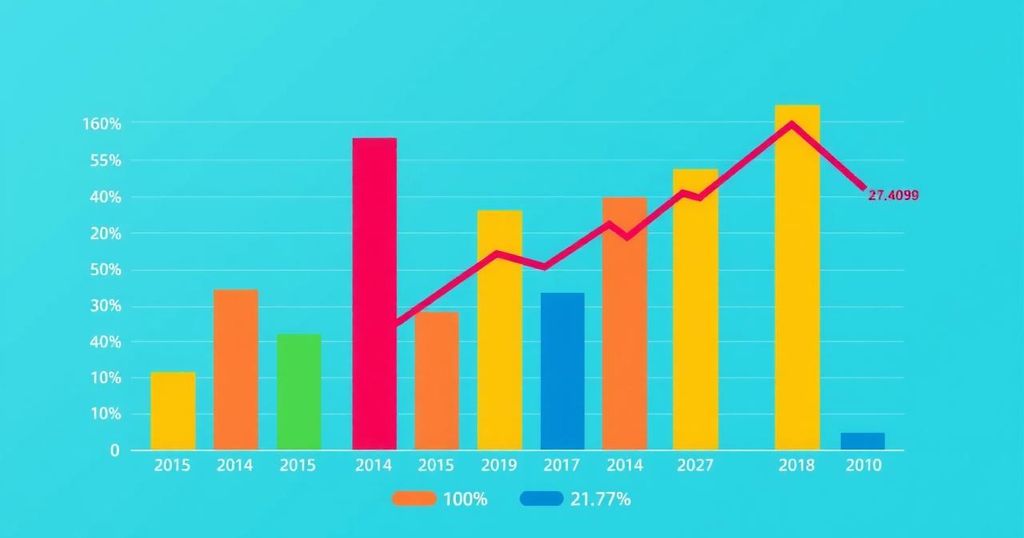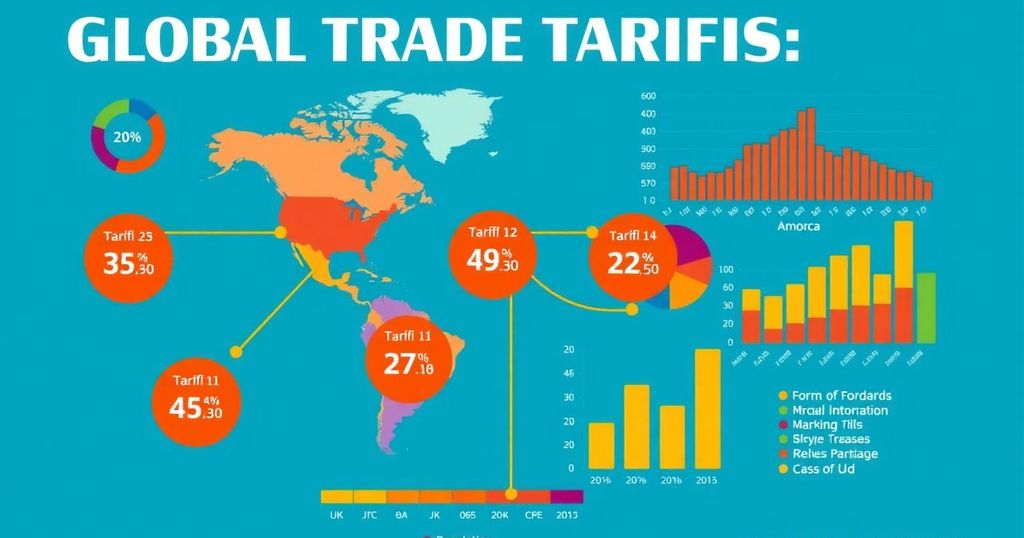Arabica coffee prices increased to a 2-week high due to concerns over Brazil’s drought affecting yields, while robusta coffee prices fell as supplies rose. Brazil’s coffee exports have also declined significantly, with projections of future crop shortages looming. In contrast, Vietnam’s coffee production statistics indicate higher exports, adding complexity to the coffee market dynamics.
On Thursday, May arabica coffee (KCK25) closed up by 1.10 points, representing a 0.28% increase, while May ICE robusta coffee (RMK25) fell by 30 points or 0.548%. The recent upward trend in arabica prices is attributed to concerns over insufficient rainfall in Brazil, particularly affecting the critical growing region of Minas Gerais which reported only 71% of its historical average rainfall. According to Cooxupe, Brazil’s predominant arabica coffee cooperative, adverse weather conditions last month are expected to adversely impact this year’s coffee yields.
Robusta coffee, however, reversed its initial gains and experienced a decline, attributed to an uptick in supply that saw ICE-monitored robusta inventories rise to a 1.5-week high of 4,336 lots. In contrast, arabica coffee inventories monitored by ICE dropped to a one-month low of 782,489 bags, indicating a contrasting supply situation. Continued apprehension about supply disruptions is keeping coffee prices firm, as evidenced by a reported 12% year-on-year decrease in Brazil’s February green coffee exports, totaling 3 million bags.
Conab, Brazil’s governmental crop forecasting agency, has also revised its projections for Brazil’s coffee crops, estimating a 4.4% year-on-year decline to 51.81 million bags for the 2025/26 crop year. The 2024 crop estimate was reduced slightly by 1.1% to 54.2 million bags. Though there are bullish indicators, such as concerns over reduced yields, Marex Solutions reported that the predicted global coffee surplus for the 2025/26 season could widen significantly to 1.2 million bags, in contrast to a slight surplus of 200,000 bags for the prior season.
In Vietnam, the largest producer of robusta beans, coffee exports surged by 6.6% year-on-year as reported by the General Statistics Office, creating a bearish sentiment for robusta prices. The El Nino phenomenon has led to significantly low rainfall across South and Central America, thereby impacting coffee trees during critical growth periods. Western Brazil is experiencing the driest conditions since 1981, further jeopardizing the prospects for the upcoming 2025/26 arabica coffee harvest.
Reduced robusta production in Vietnam is anticipated to support prices, with the 2023/24 crop output forecasted to drop by 20% to 1.472 million metric tons, the smallest in four years. The USDA FAS has predicted that production will decrease slightly for the following year with current exports also down by 17.1% year-on-year. Brazil witnessed record coffee exports of 50.5 million bags for 2024, even as the ICO noted a decrease in global exports during the last quarter of 2024.
While the USDA’s biannual report projected an increase in global coffee production for 2024/25, coffee prices may remain volatile due to varying factors across different regions. For instance, arabica production may see a 1.5% increase while robusta production is predicted to rise by 7.5%. However, ending stocks are expected to contract to a 25-year low of 20.867 million bags. Moreover, Volcafe has scaled back Brazil’s 2025/26 arabica production estimate to 34.4 million bags, predicting an ongoing global deficit in arabica coffee.
It should be noted that the author, Rich Asplund, neither holds nor has held any positions regarding the securities discussed in this article. All information presented is intended for informational purposes only and adherence to the Barchart Disclosure Policy is advised for further details.
In summary, arabica coffee prices have reached a two-week high amid concerns of reduced yields due to insufficient rainfall in Brazil. While robusta coffee prices fell as supplies increased, forecasts indicate a potential global coffee surplus, contrasting with the anticipated shortfall for arabica coffee. Furthermore, projections for Brazil’s coffee crops have been revised downward, impacting pricing dynamics in the coffee market moving forward.
Original Source: www.nasdaq.com




